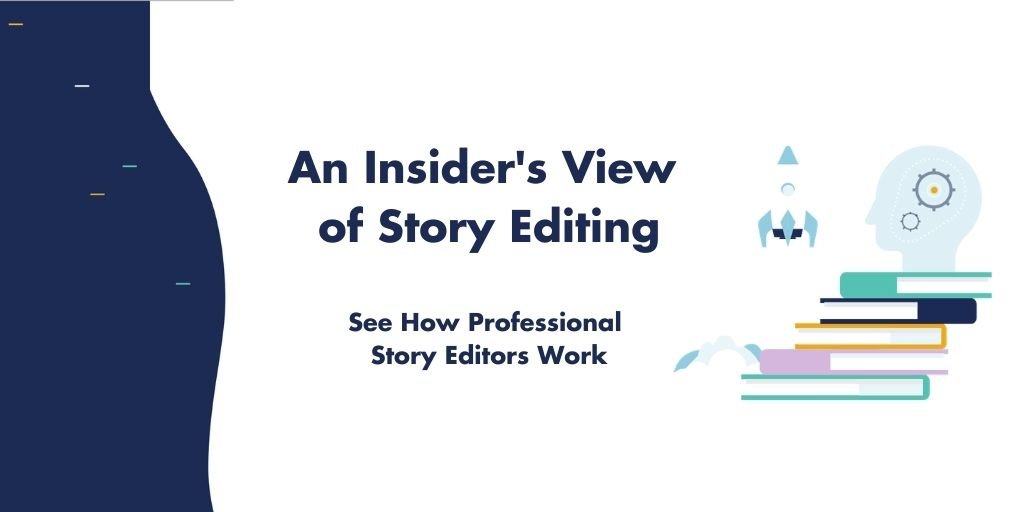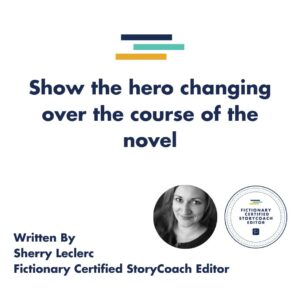
In fiction, we often talk about the need to create a hero, but not every protagonist needs to be a hero.
Sometimes they can be ordinary people caught in difficult or extraordinary circumstances. We see this often in genres such as:
- Literary fiction,
- Women’s fiction, and;
- Narrative non-fiction.
There are certain other fiction genres and story types, though, in which creating the perfect hero is expected or, at least, beneficial. To write these kinds of stories, we need to know how to create a hero and what makes them perfect for your story.
What Makes a Hero?
According to Sacha Black in her book, 10 Steps to Hero: How to Craft a Kickass Protagonist, “A ‘hero’ in the purest form is someone of extraordinary ability (although not necessarily magic powers) who does good things” (p. 3).
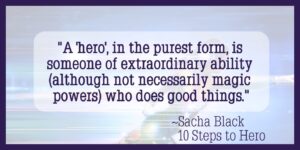
If we look at the classic hero we see in novels and movies, then, Superman is a hero because he has extraordinary abilities that are outside the realm of what’s possible for ‘ordinary’ humans. Since he uses his alien abilities for good (to save human lives and stop villains) and has a strong moral compass, he is a hero.
Then there are heroes like Spiderman and The Flash, who start out as ordinary humans—Peter Parker and Barry Allen—but gain extraordinary abilities through scientific experiments or accidents.
Now, if you’ve read the comics or watched the movies or series, you will get plenty of examples of people who also gain extraordinary abilities but use them for destruction and personal gain.
These are the villains our heroes battle.
But because Spiderman and The Flash use their abilities for good, they are the heroes.
Moving closer to ‘ordinary human’, we might create a hero like Iron Man and Batman. These are protagonists with no extraordinary abilities per se.
Instead, what they have is:
- An excess of money,
- Great intelligence, and;
- A strong sense of justice.
So, they use the resources they have to create technology that will give them the ability to help people and stop the bad guys.
Next, let’s look at Katniss Everdeen from Suzanne Collin’s The Hunger Games.
Is she a hero or ‘just’ the protagonist? She doesn’t have any inhuman abilities, and she is so poor that she has to break the law to go hunt food for her family.
However, Katniss is, in fact, a hero.
She is gifted in hunting with a bow, but this skill does not come from any supernatural source.
It comes strictly from:
- necessity,
- A strong sense of survival, and;
- A great desire to take care of her family and ensure they live.
Katniss is a survivor who proves time and again that she is willing to sacrifice herself for those she cares about.
Actionable Tips You Can Use to Create the Perfect Hero
Want to create a hero readers resonate with?
Creating the perfect hero will be one that seems ‘human’ despite potentially having incredible powers or abilities.
They are someone the readers can relate to.
Early in his book, The Secrets of Character: Writing a Hero Anyone will Love, Matt Bird states that there are three things that readers want and, thus, that there are three things we must do as writers.
We must get readers to:
- Believe in the reality of the hero
- Care about the hero’s circumstances
- Invest their hopes in the hero to solve this problem (p. 7)
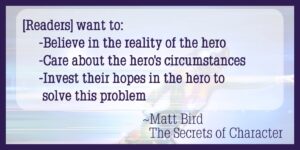
So how do we do that, exactly? Here are some tips:
Tip 1: Make your hero flawed
The perfect hero will be perfectly imperfect, like each of the heroes I discussed above.
Superman has a very literal flaw in that he has a weakness to kryptonite, which drains his powers.
This is not his only flaw, but it is the most obvious.
Spiderman and The Flash care about their families which, in itself, isn’t a flaw. The flaw comes in when they allow their feelings for their families to cloud their judgement, which, in turn, causes them to make bad decisions from time to time, and can make them easy for the villains to manipulate.
Iron Man and Batman—or, should I say, Tony Stark and Bruce Wayne—as rich as they are, can be arrogant and self-important and think themselves above the law.
Our most human hero, Katniss Everdeen, once tried to drown her sister’s cat.
When you create a hero, consider how you can make them flawed.
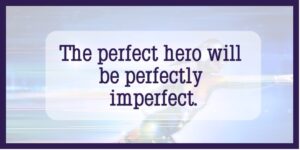
Tip 2: Give them a rich backstory
This point is a bridge of sorts between my previous point and the next one.
Even if you never tell the hero’s entire backstory, make sure you, as the author, know enough about the hero to make their behaviors consistent and believable.
How have their experiences made them into who they are today? How will this affect how they react in various situations?
Tip 3: Give them a ghost
The ‘ghost’ is something from your character’s past that continues to haunt them to this day. This is, of course, related to building that rich backstory that I mentioned in the previous point.
Tip 4: Have them start out believing ‘the lie’
The hero’s:
- Backstory,
- Ghost,
- Lie, and;
- Flaw.
Are all related.
When you create a hero and build their backstory, ensure there is something traumatic and important that sticks with them into the main story (the ghost).
This past experience and the ghost cause the hero to believe something that isn’t true (the lie). Their flaw can be that they stubbornly cannot let go of their past or the lie for a large portion of the story.
Doing these things leaves room for the next point.
Tip 5: Show the hero changing over the course of the novel
There are characters who will not change over the course of a novel.
This often happens with anti-heroes and villains. When you create a hero, though, your readers should be able to see them grow and change from the beginning of the story to the end.
At the beginning, they are haunted by ‘the ghost’, believe the lie and, as such, are flawed.
By the end of the novel, they still should not be perfect since we want them to seem real and ‘human’, so to speak (they might be an elf or a hobbit or a vampire, but you get what I mean). But they should have had enough positive growth toward:
- Exorcising the ghost,
- Eeeing the truth, and;
- Overcoming the flaw to succeed in achieving the story goal
The story goal they end with can be different than the one they started out with.
NOTE: If you create a hero for a tragedy, they will fail to overcome their flaw and fail at achieving their story goal.
Further Reading…
If you would like to read more about how to create a hero, and about their villainous counterparts, check out the article How to Write Heroes and Villains by James Gallagher here on the Fictionary blog.
Article Written by Sherry Leclerc

Sherry Leclerc is a Fictionary Certified StoryCoach editor, Fictionary content creator, Writer’s Digest certified copy editor, and independent author. She is a member of Editor’s Canada, the Canadian Authors Association (CAA), and The Alliance of Independent Authors (ALLi).
Sherry holds a B.A. in English Language and Literature and a B.Ed. She is the sole proprietor of Ternias Publishing, through which she offers various editorial services. She also has a YouTube channel where she has a vlog about writing and editing, titled The Mythic Quill. You can find it on Youtube .
Sherry currently lives in Sydney, Nova Scotia, Canada. You can contact her at sherry@terniaspublishing.com or sherry@sherryleclerc.com
When do you ever get to see what a story editor delivers to a client if the client is not you?
If you’re thinking of becoming a story editor, this course is for you. Our course gives you an insider’s view of what happens in a story edit. This is similar to a structural or substantive edit for fiction.
Before you hire an editor or edit your own story, it’s important to understand what a story edit is.
Thirteen professional editors edited the same novel.
Each editor worked separately in Fictionary StoryCoach.
This course evaluates their edits and shows you what worked and what didn’t. We’ll show you two scenes before editing and after revisions based on the editors’ suggestions. We even compare the editors’ summary letters and per scene notes.
For writers looking to hire a professional story editor, this course shows you what you should receive from a story editor. It will also show you how an editor might look at your story.’
Sign up now for great value.
On sale for $39 USD. Use Coupon INSIDERSVIEW
Regular Price: $99.


